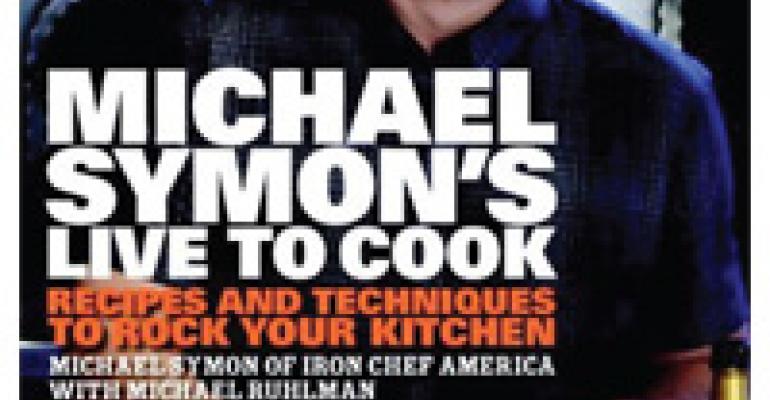
He's already proven that a chef can have a national presence even if his restaurant is located in a city the foodie crowd classifies as a culinary backwater. Now Michael Symon is giving others a blueprint of how they can do the same in Live to Cook: Recipes and Techniques to Rock Your Kitchen (Clarkson Potter, $32.50). It's packed with technique tips and can't-miss recipes. But pervading it all is Symon's philosophy that being yourself and staying true to where you come from is the key to success.
In his case, he's from Cleveland and his food, its flavors and his knack for fashioning it all into a pitch-perfect formula beloved by his hometown crowd are what makes him tick. This approach certainly hasn't stopped Symon from gathering a fistful of national honors — the latest being the 2009 James Beard Award for Best Chef, Great Lakes — and a slew of TV work that culminated in his Iron Chef America gig.
In his restaurant kitchen, Symon gives the occasional nod to current trends, but mainly produces food that has a strong Midwestern sensibility. “The food I've been doing my whole career is straightforward: there's no masking of flavors, and the dishes are economical and efficient, with minimal embellishments, but with big, big flavors and soulful satisfaction,” he says.
The book presents recipes from all parts of his menu, except dessert. Worth the price of admission alone are blow-by-blow descriptions of such longtime Symon signatures as Spicy Tomato and Blue Cheese Soup; Beef Cheek Pierogies with Wild Mushrooms and Horseradish; Slash and Burn Grouper; and Mac and Cheese with Roasted Chicken, Goat Cheese and Rosemary.
A big factor in Symon's success is that break-the-bank pricing won't cut it in the Cleveland market. As a result, his cooking doesn't necessarily rely on super-expensive ingredients, and a big part of his art is using lesser cuts of meat. That, plus the many items he manufactures in-house, produces a good food cost for him, and would do the same for you. His book winds up being a template for contemporary restaurant operation, although that isn't necessarily its intent.
The bottom line on Live to Cook? “What's more important than recipes is how we think about food, and a good cookbook should open up a new way of doing just that,” he says. Mission accomplished, Michael.
DamGoodSweet

By David Guas
Taunton Press, $25
You're already familiar with beignets and bananas Foster. But there are plenty of other classic New Orleans desserts just as worthy. Pastry chef extraordinaire David Guas is the guy who can tell you what they are and how to make them. The New Orleans native, who rose to prominence as pastry chef for ace Washington, DC restaurant group Passion Food, LLC (DC Coast, Acadiana), shares 50 recipes in his book. Each is presented with can't-miss directions, plus a backstory that details how the dessert earned its place in New Orleans culture and lore. The phrase “It's all good” is an overused cliché, but it accurately describes this book's contents.
My Nepenthe

By Romney Steele
Andrews McMeel, $35
This book's 85 recipes provide tasty takes on California cuisine, a culinary genre Nepenthe helped define. But you'll also enjoy reading about a family that created not just a restaurant, but almost an entire world. You'll find more history than how-to, but there's plenty to learn about concept creation from a place that has remained atop California's list of destination dining spots for its entire 60-year history. No, Nepenthe's dramatic view of the Big Sur coast line can't be replicated. But its sophisticated approach to restaurateuring is highly portable.





